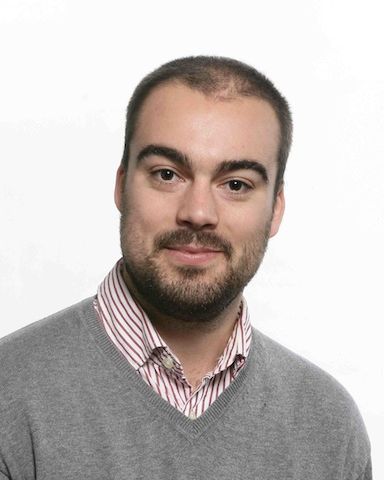Tim Zuehlsdorff

Dr Tim Zuehlsdorff
Postdoc in Dr Hine's group
Office: 514 Mott Bld
Phone: +44(0)1223 3 37278
Email: tjz21 @ cam.ac.uk
TCM Group, Cavendish Laboratory
19 JJ Thomson Avenue,
Cambridge, CB3 0HE UK.

Research
My main research interest lies in developing computational techniques capable of predicting the optical properties of large systems, ranging from semiconductor nanoparticles to pigment-protein complexes. These types of systems generally present a challenge for computational modelling: While the optical absorption of semiconductor nanoparticles is strongly influenced by quantum confinement and surface effects, the coupling of a pigment to light is dependent on its protein environment. In each case, accurate predictions of absorption spectra can only be achieved by a quantum mechanical treatment of systems containing thousands of atoms.
For the purpose of modelling optical properties of large systems, I am making use of the time-dependent extension of density-functional theory (TDDFT). TDDFT has the advantage of providing a good balance between computational cost and achievable accuracy, making it well-suited to large scale applications that cannot be treated by more advanced quantum chemistry methods. However, in its standard formulation, TDDFT exhibits a cubic scaling of computational effort with the system size studied, making the treatment of systems containing thousands of atoms prohibitively expensive computationally. For this reason, my research is focused on applying and extending techniques that have been developed to allow for a linear scaling of computational effort with system size in standard ground-state density functional theory to the TDDFT. The methodological developments that originate from my research are part of the linear-scaling DFT code ONETEP.

In Plain English
The focus of my research is to develop and use computer simulations in order to determine how different materials and biological matter interact with light on the nanoscale. This requires the simulation of thousands of individual atoms, which is a challenge even for modern supercomputers and can only be achieved by making a number of approximations to the way electrons interact with each other. The study of the kind of systems I am interested in has a wide variety of potential applications, ranging from the development of next generation solar cells to sensors capable of detecting pressures on the nanoscale.
Featured Publications
- Linear-scaling time-dependent density-functional theory in the linear response formalism. J. Chem. Phys. 139 064104 (2013) arXiv:1303.0259v2